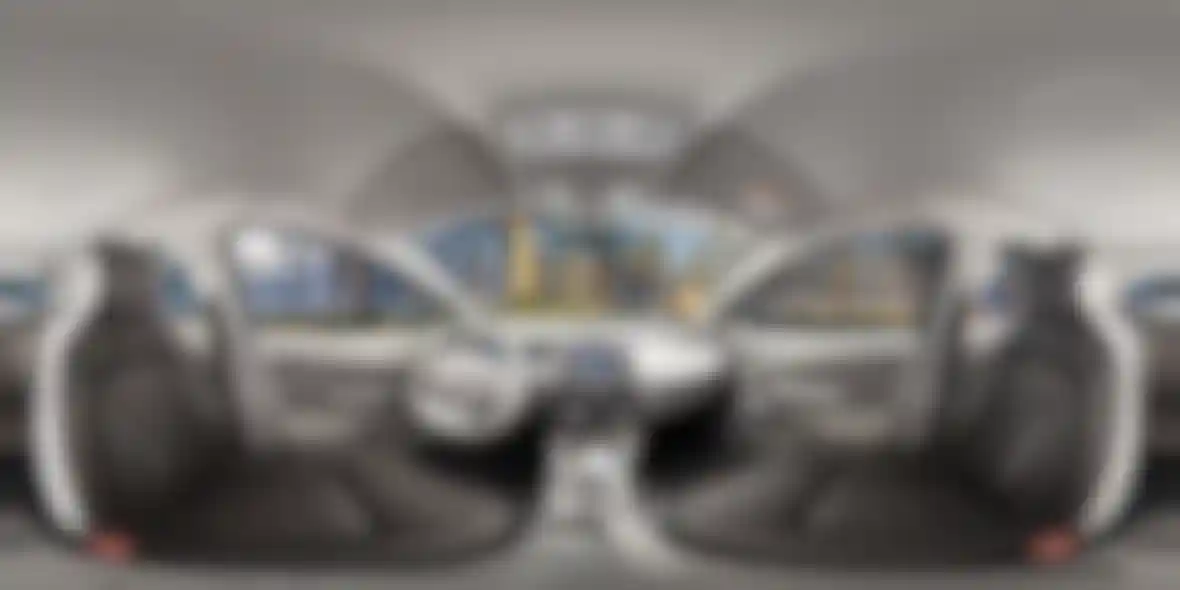
VR Worlds for Renault VR worlds are also primarily made up of images that first have to be created and rendered: something that can be done perfectly using Cinema 4D. And if the deadline's a little tight you can always count on Google Zync to help you get your rendering done on time.
Virtual Reality has been a hot topic over the past few years and artists who create content for 360° presentation are often moving through uncharted territory: the challenges that have to be met range from defining the proper angle of view to technical solutions and scaling for different end devices. This is why it’s important to have a tool you can count on – like Cinema 4D!
Scorch Films, one of the top names for clients who expect perfection in the technical realization of their designs, is located in the heart of London’s Soho district. Scorch’s portfolio includes work for brands such as Pepsi, BBC, Rimmel, Hilton, Unilever, Hyundai, Subway and many more – an illustrious client base that now also includes the French automaker Renault.
What Renault wanted Scorch to do was find a new way of presenting their model lines Megane, Zoe and Clio to the general public and let it find out more about these products. Scorch developed a very unique concept for the campaign:
“We created three unique VR environments to communicate the personality of each vehicle,” explains Ramsay. “In these films, participants can look through the windows of each car and at the surrounding scenery – every few seconds the features of the landscape move and shift, delivering a new perspective for the viewer to take in.”
Scorch used Cinema 4D to realize their concept and to create the models, lighting and textures. Early on in the project it became clear that a scalable expansion of the existing render resources would be required to render the project.
“The creation of VR content is a complex process, not to mention the complex and comprehensive renderings that need to be created,” remembers Ramsay. “Even the first tests showed that we would need a Cloud rendering solution in addition to your own resources to make sure that we finished on time.”
The solution they chose was Google’s Zync Render, which is integrated into the studio’s and Cinema 4D’s pipeline. This solution made it possible to master the massive render jobs efficiently and on time.
The actual challenge was the amount of data that was generated and not the creation of the three environment scenes, even if they themselves were not easy to create.

“In order to create a 360° view we used six cameras in each scene,” explains Ramsay, “each of which rendered 1024*1024 that were subsequently combined into a 360° 4K video. This was a lot of image material that had to be rendered!”
Zync Render was easy to integrate into the pipeline: “We used Cinema 4D’s Physical Renderer and took a lot of time for fine-tuning the lighting and the final renderings,” remembers Ramsay.
“When you’re working with such a tight deadline you often have to make compromises with regard to render times and the required render quality,” Ramsay continues. “With Zync Render in the production pipeline we didn’t have to make any compromises and were able to set up the scene exactly as we wanted. The files were uploaded to the Cloud for rendering and the finished results were sent back to our network, ready for final compositing in After Effects. With this solution we were able to stay on budget because we didn’t need any additional hardware or a render farm.”
“We also used the time advantage we gained by using the Cloud to add artistic variations and to fine-tune each scene until we had exactly the look we wanted!”
“With Cinema 4D and Zync, Scorch was able to deliver each video for Renault’s VR presentation in the desired quality and with consistent 4K resolution,” says Ramsay. “You need a lot of render power for 4K in VR. With technology advancing at a rapid pace we also need to be prepared for VR resolutions of 8K, 16K and even 32K in the future.”
“There are also even more technological advances on the horizon: for example, if you want to create VR presentations in 3D, render times will double! A separate film has to be rendered for each eye to achieve the required depth of field. Thanks to the Cinema 4D pipeline and easily scalable ender power of Google’s Zync Cloud render service, Scorch is more than ready to meet these challenges.”
“Cloud rendering makes it possible for us to grab the render power we need when we need it,” concludes Ramsay. “With Zync we were able to get the most render power out of 50 computers – or more if we had needed them. We’ll definitely use this service in the future whenever required. Setting up such a render farm in our own studio would not be feasible and with tools such as Cinema 4D and Zync we’re always ready for any render job as well as the increasingly complex projects that come our way.”
Scorch Films Website: www.scorchfilms.com
Zync Render Website: www.zyncrender.com






